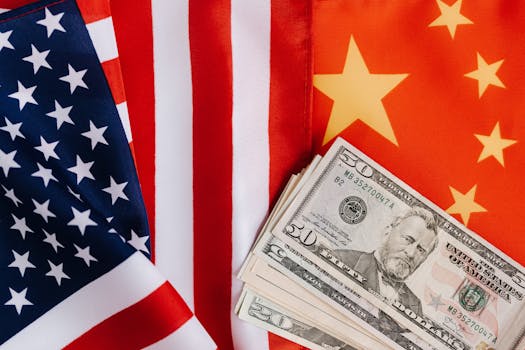
**
China-US Trade Deal: Fresh Signals of Implementation Despite Lingering Tensions
The long-awaited implementation of the Phase One trade deal between the United States and China is finally showing signs of progress, although significant challenges and lingering tensions remain. Recent pronouncements from both sides suggest a renewed commitment to fulfilling the agreement's provisions, offering a glimmer of hope amidst a backdrop of broader geopolitical rivalry. However, experts warn that the path forward is fraught with complexities, and the deal's ultimate success hinges on continued cooperation and a willingness to address unresolved issues. This article delves into the latest developments, examining the key signals of renewed commitment, the obstacles that persist, and the potential implications for global trade and the US-China relationship.
Renewed Commitment: Signs of Progress on the US-China Trade Deal
Several recent events point towards a potential shift in the trajectory of the Phase One trade deal. These include:
Increased Chinese Purchases of US Agricultural Products: China has significantly increased its purchases of American soybeans, agricultural products, and energy, a crucial element of the agreement. While not yet meeting all targets, the uptick signifies a concerted effort to fulfill the deal's stipulations. This has been welcomed by American farmers who have faced significant economic hardship due to the trade war. This increase in agricultural imports is a key indicator tracked by analysts monitoring the progress of the Phase One deal.
High-Level Diplomatic Engagement: Renewed communication channels between high-ranking officials from both nations suggest a willingness to engage in constructive dialogue. While there have been periods of significant tension, these recent interactions point towards a desire to de-escalate trade disputes and focus on implementing the existing agreement. These diplomatic efforts are crucial for addressing the complex and nuanced issues arising from the deal.
Easing of Some Trade Restrictions: Although not widespread, there have been reports of minor adjustments to certain trade restrictions from both sides, showing a move towards greater reciprocity. While major trade barriers remain, these small steps reflect a potential willingness to gradually build trust and cooperation. This easing of restrictions, however minor, is viewed as a positive sign.
Persistent Challenges and Unresolved Issues: Obstacles to Full Implementation
Despite these positive signs, numerous challenges continue to hinder the full implementation of the Phase One trade deal. These include:
Geopolitical Tensions: The overarching geopolitical rivalry between the US and China casts a long shadow over economic relations. Issues such as Taiwan, human rights in Xinjiang, and the South China Sea continue to generate friction and undermine trust. These geopolitical tensions frequently overshadow economic cooperation.
Intellectual Property Rights (IPR) Concerns: Concerns over the protection of intellectual property rights persist, with the US alleging continued violations by China. Effective enforcement of these provisions remains a significant hurdle. IPR protection is a key component of the Phase One agreement.
Enforcement Mechanisms: The agreement's enforcement mechanisms are relatively weak, leaving both sides with limited recourse in case of non-compliance. This lack of robust enforcement mechanisms could weaken the deal’s overall impact.
Technological Competition: The fierce competition between the US and China in the technology sector, particularly in areas such as 5G, artificial intelligence, and semiconductors, continues to strain relations. This technological rivalry often spills over into trade disputes.
The Importance of the US-China Trade Relationship in a Global Context
The US-China trade relationship is undeniably one of the most significant in the global economy. A successful implementation of the Phase One deal would have broad positive implications for global trade, fostering stability and predictability in international markets. Conversely, a failure to implement the agreement could lead to further escalation of tensions, potentially triggering a broader trade war with severe consequences for the global economy. This underscores the crucial importance of both sides working towards a mutually beneficial outcome.
Looking Ahead: The Future of US-China Trade Relations
The future of the US-China trade relationship remains uncertain. The recent signals of renewed commitment are encouraging, but the persistent challenges must be addressed effectively to ensure the Phase One deal's success. Both sides need to demonstrate a genuine willingness to compromise and engage in constructive dialogue to navigate the complexities of their relationship. The next few months will be crucial in determining whether the current momentum can be sustained or whether the relationship will revert to a more confrontational stance. Experts will be carefully monitoring key indicators, including Chinese purchases of US goods and services, high-level diplomatic engagements, and progress on addressing specific issues. The ultimate outcome will have significant consequences for global economic stability and the overall geopolitical landscape. The ongoing debate surrounding tariffs, trade imbalances, and intellectual property rights will continue to shape the narrative for years to come. The successful navigation of these challenges will define the nature of US-China relations in the decades ahead.




















